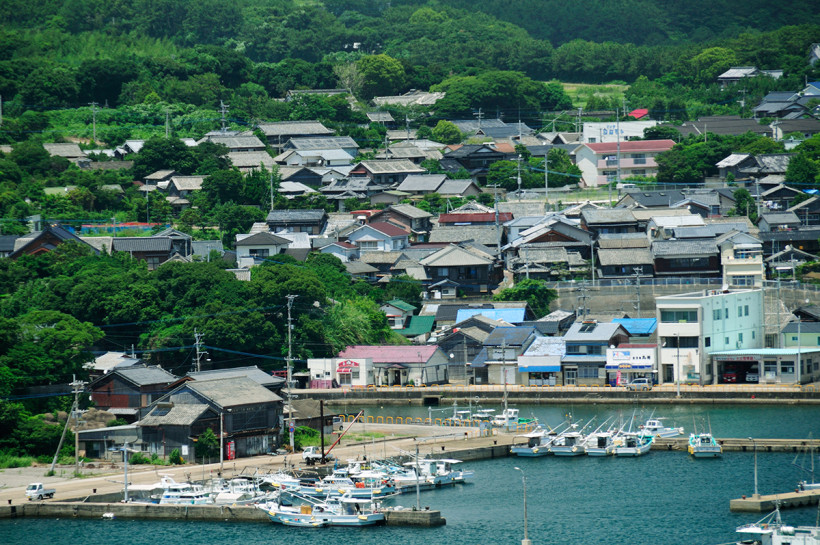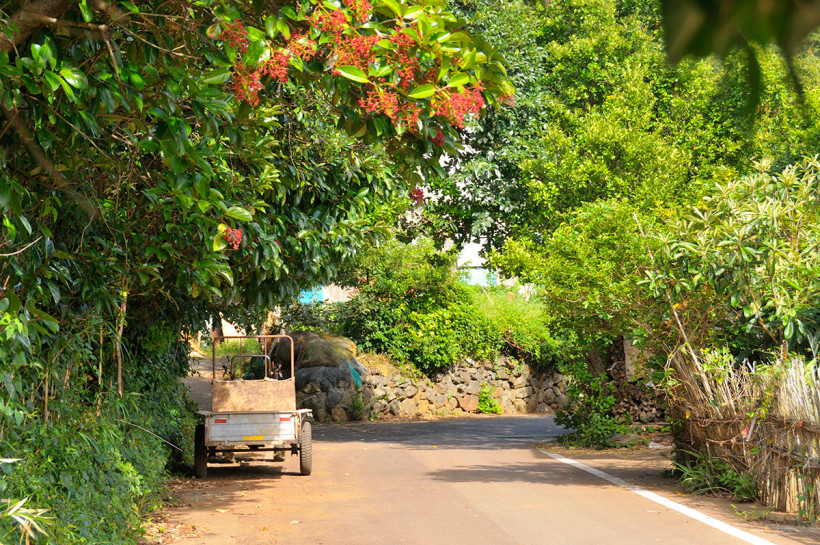A life with a meaning.
Far away from all the tourist attractions, with no luxury resorts and bland hotels in sight, where an immediate solution of a convenience store is nowhere to be found.
Travelers hop off the ferry at a local port to discover a whole new world of shimmering sea, tile-roofed Japanese houses, and a decided lack of travelers. Locals here live in harmony with nature: growing their own food which they trade and share with each other. Experience the local culture through their eyes, relearning the values long forgotten, discovering a new side of Japan and yourself. Be careful though, the locals’ love for their home is contagious, making it hard to leave.
Our dream is to help preserve the traditional culture and lifestyle found on Ojika Island, while at the same time energizing the local economy through tourism. Over the years, many people from all over Japan, as well as from within the island have shared our dream.
It gives us great pleasure to invite you to visit our small island and help shape its future.
![]()
In the northern reaches of Goto Archipelago in Nagasaki prefecture lies the tiny island of Ojika, where the bright turquoise sea meets rugged volcanic rocks and wide-open spaces.
The awe-inspiring nature of Ojika Island is protected by Sakai National Park, while the town with its loveliest of the nostalgic rural atmosphere is regarded as one of The Most Beautiful Villages in Japan.
![]() Our small island is located around 60 kilometers west of Sasebo Port in Nagasaki Prefecture. You can reach Ojika from Sasebo in as little as 90 minutes via a high-speed boat, or a regular ferry that makes the journey from Sasebo to Ojika in about 3 hours. Alternatively, there is an overnight ferry leaving Hakata Port in Fukuoka city around midnight, reaching Ojika at around 5 AM.
Our small island is located around 60 kilometers west of Sasebo Port in Nagasaki Prefecture. You can reach Ojika from Sasebo in as little as 90 minutes via a high-speed boat, or a regular ferry that makes the journey from Sasebo to Ojika in about 3 hours. Alternatively, there is an overnight ferry leaving Hakata Port in Fukuoka city around midnight, reaching Ojika at around 5 AM.
Ojika town consists of seventeen islands, six of which are populated. Ojika Island has the largest population of around 2,300. Two other inhabited islands: Madara Island and Kuroshima Island are linked to Ojika Island by a bridge. There are also Ōshima, Noshima and Mushima islands that can be accessed via liner from Ojika Island.
The (mostly) uninhabited Nozaki Island is perhaps the most unique island: in the seventeenth century it used to be a refuge for the “Hidden Christians”. In 2018 the island was added to UNESCO’s World Cultural Heritage list as one of the “Hidden Christian Sites in the Nagasaki Region”. Visitors can access Nozaki Island by boat from Ojika Island. Basic accommodation is also available for those who wish to stay overnight.
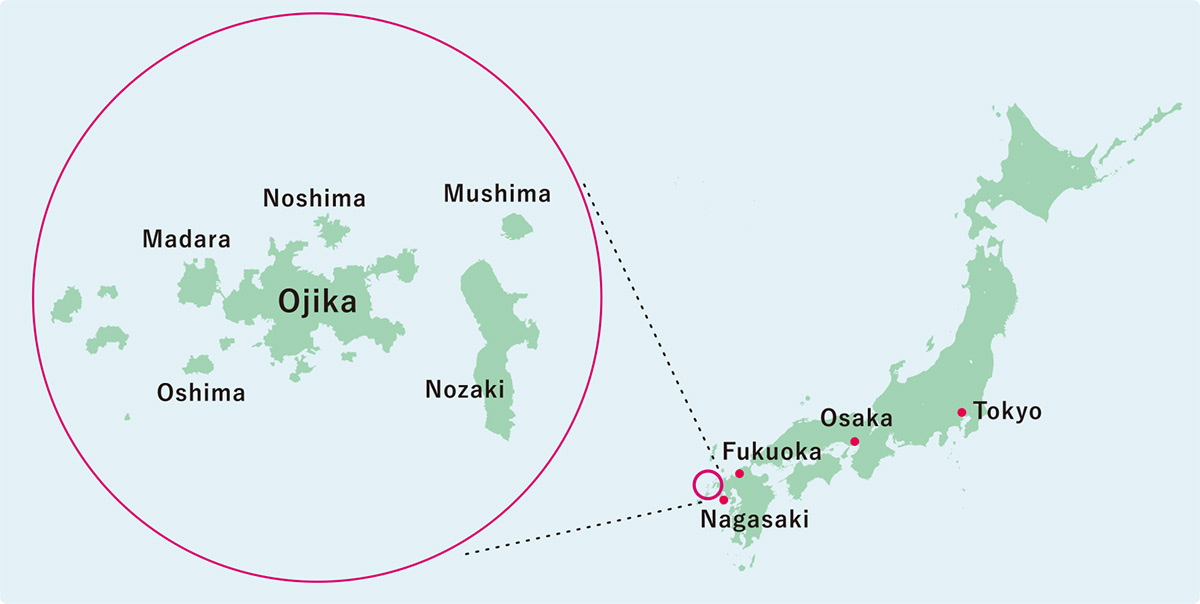
![]()
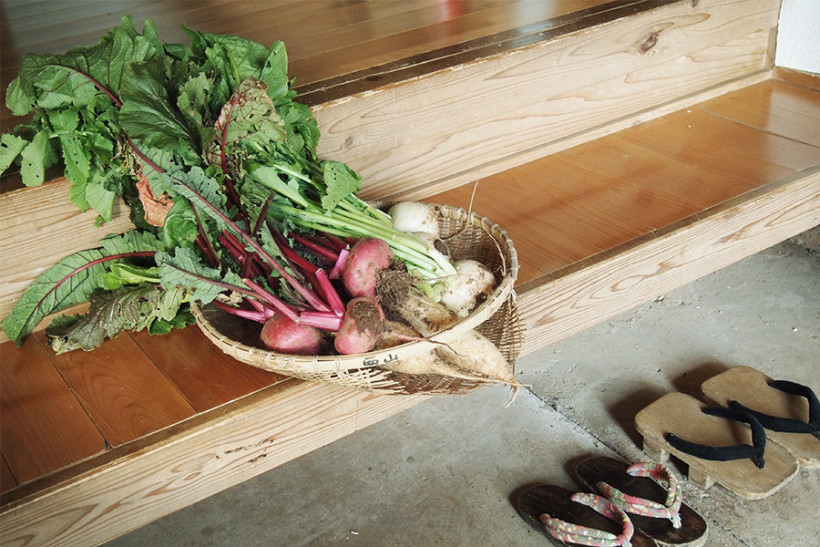
Ojika’s culture is based on the concept of Omoiyari (おもいやり in Japanese), which emphasizes the importance of being considerate of others. Here everyone is a part of a close community, where everyday life is full of thoughtful acts of kindness. The old custom of bartering: an act of exchanging something you have an abundance of for something you need, is very much alive here.
A fisherman will gift his neighbor farmer with a fish he caught. The next morning he will find freshly harvested rice and vegetables left at his door. It is said that generosity leads to greater joy and happiness and the people in Ojika are living proof of this.
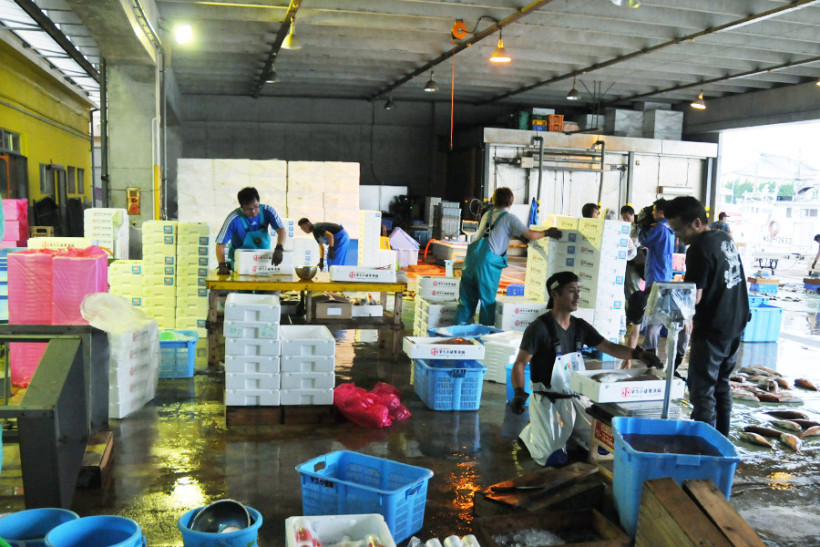
Surrounded by bountiful sea from every direction, Ojika Island is a treasure trove of marine delicacies. That is why some visitors might feel frustrated with a lack of shops selling fish here.
The reason for this is simply that locals have no need for them: being able to catch their own dinner any time they want, and if not, a kind neighbor or a friend will always have some fish to spare.
The fishing port of Ojika Island is as lively as ever, however, with fresh sea goodness being brought in here every morning by hard-working fishermen. It then gets exported to Nagasaki, Osaka, Kyoto, and Tokyo areas on mainland Japan. Visit here early morning to witness the fresh array of seafood of every shape and color being unloaded from the nets.
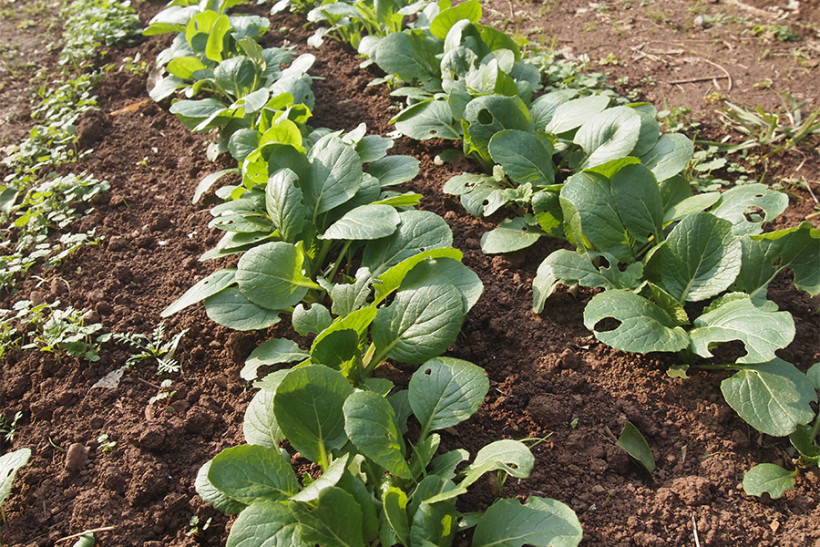
Experience the change of season in Ojika Island through its seasonal harvest. Here you will see vegetables growing in every conceivable location. The green leaves of all shapes and sizes will make you wonder what kind of vegetable is hiding inside the red volcanic soil beneath. Local shops are lined up with local produce, straight from the fields. However, it’s not only the farmers who grow vegetables. The kitchen garden is an important part of every household’s daily diet, with locals growing their own dinner in the backyard. Everyone makes sure to grow more than one can eat so that they can share with friends and neighbors: a great way to cultivate friendships.
![]()
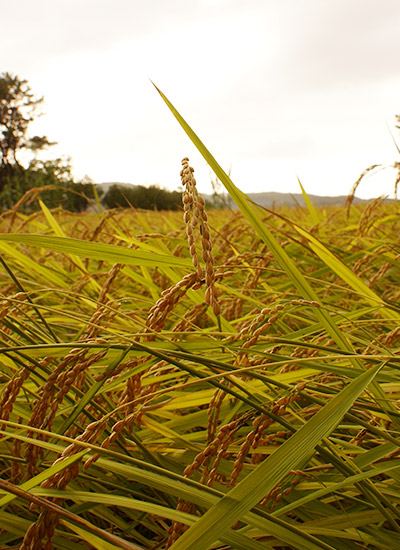
![]()
Ojika Island has a selection of unique lodgings that
will give you a feel for what it’s like to live on an island.
Ranging from budget-friendly hostels ran by friendly locals to
luxury folk houses that you can have all to yourself, find the experience you want
— whether that’s a complete rural getaway or cozy convenience —
while you enjoy all that Ojika has to offer.
Homestay
Folk House Rental
Kojiroyama Folkhouse
Ryokan and B&B
Nozaki Nature Village
